Image List
-

This computer-generated animation begins with a rough map of the planet HD 189733b, as measured with NASA's Spitzer Space Telescope. Astronomers obtained a series of pole-to-pole strips in infrared light, then wrapped that map around a 3-d surface to show what the planet looks like. They found that the planet has a "hot spot" offset from high noon.
NASA/JPL-Caltech -
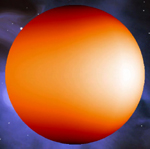
In this computer-generated animation, HD 189733b rotates to show the entire surface of that gas giant planet. Actual infrared data is used to generate the cloud-top map.
Heather Knutson (CfA) -
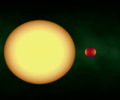
This movie simulates the orbit of HD 189733b as it first crosses in front of its parent star, then passes behind. Spitzer began observing the planet when it was between us and the star, with its cooler, dimmer night side in view. As the planet swept around, the hotter and brighter day side rotated into view, and the total infrared light measured by Spitzer went up. The size of this increase in infrared brightness over time told astronomers how the temperature across the entire surface of the planet varies.
NASA/JPL-Caltech/T. Pyle (SSC) -
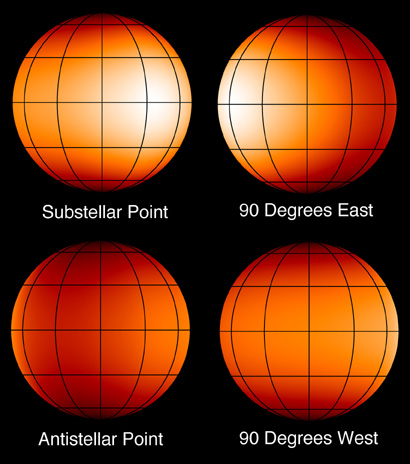
Four views of the planet's cloudtops in infrared light, each centered at a point of longitude 90 degrees from the last. A grid of longitude lines is superimposed on the map. These views clearly show a hot spot that is offset from the substellar point (high noon) by about 30 degrees. The offset may indicate fast "jet stream" winds of up to 6,000 mph.
NASA/JPL-Caltech/Heather Knutson (CfA) -
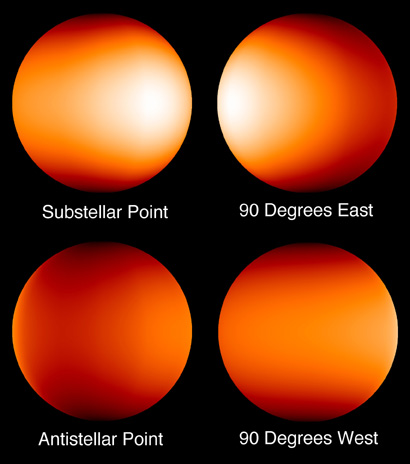
Same as the above, without lines of longitude.
NASA/JPL-Caltech/Heather Knutson (CfA) -
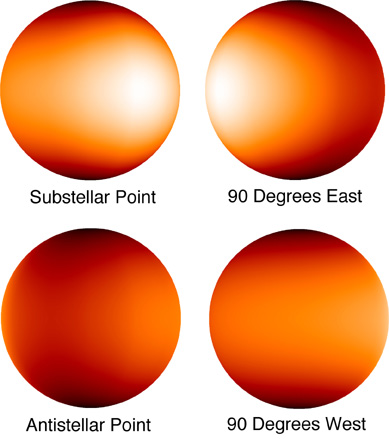
Map of HD 189733b on a white background, without lines of longitude.
NASA/JPL-Caltech/Heather Knutson (CfA) -

Map of HD 189733b on a white background, with lines of longitude.
NASA/JPL-Caltech/Heather Knutson (CfA) -
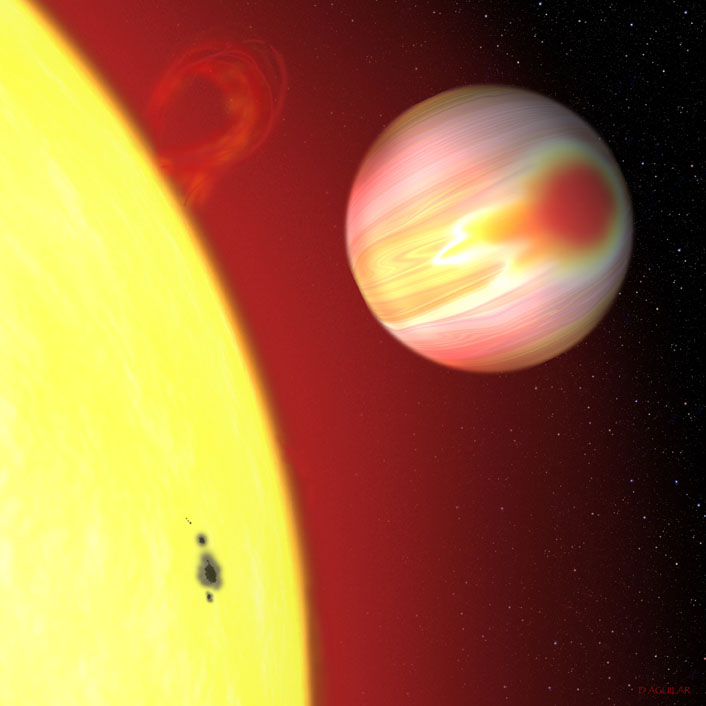
An artist's conception of HD 189733b, which some have dubbed the "Bulls-eye" planet because of the bright "hot spot" shown here.
David A. Aguilar (CfA) -

A full-globe map of the "hot Jupiter" planet HD 189733b. The map reveals a "hot spot" that is offset from the substellar point (high noon) by about 30 degrees. The offset may indicate jet stream winds of up to 6,000 mph.
NASA/JPL-Caltech/Heather Knutson (CfA)